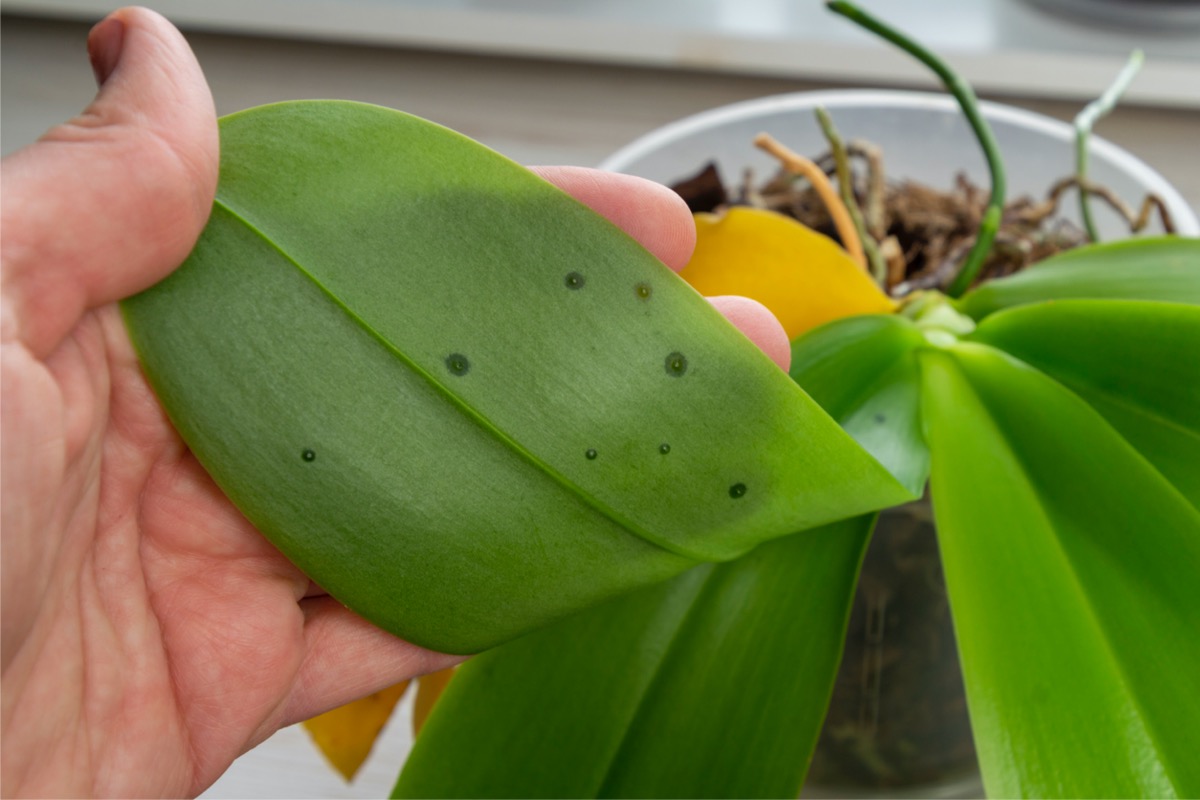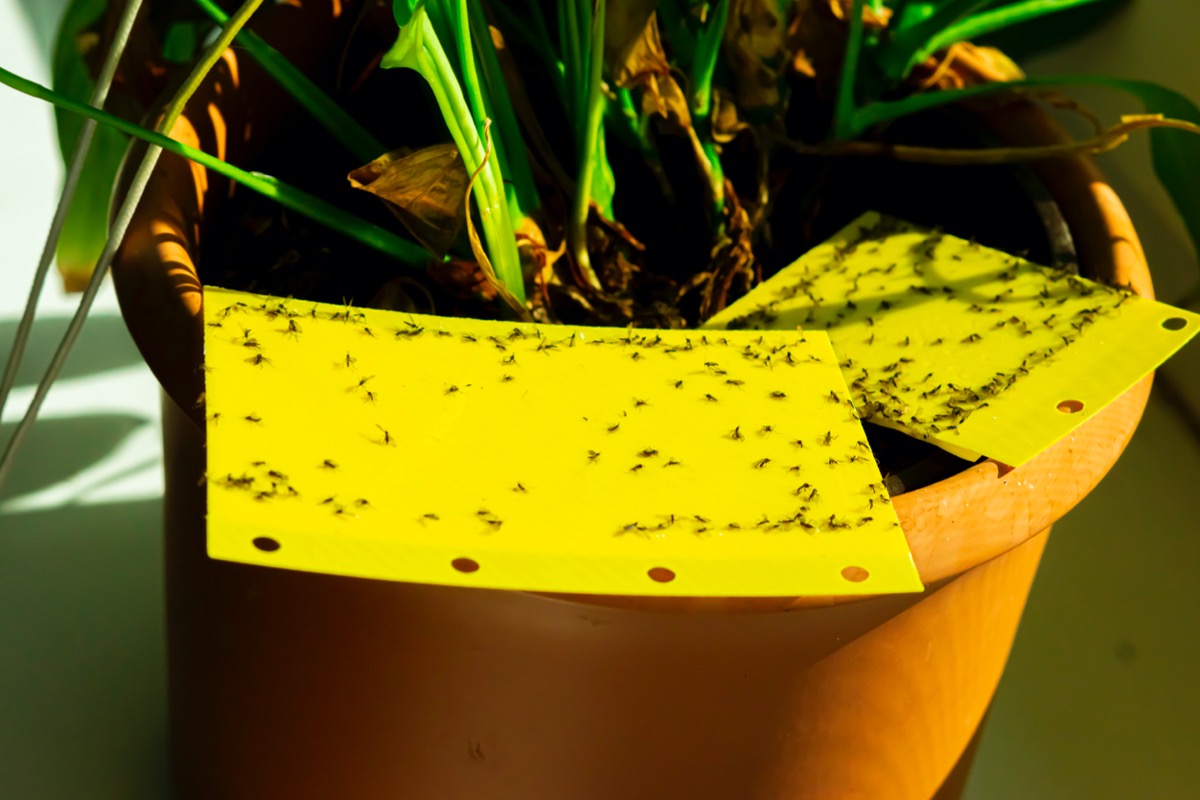We may earn revenue from the products available on this page and participate in affiliate programs. Learn More ›
In “The Complete Houseplant Survival Manual,” Barbara Pleasant notes that “overwatering is the leading cause of houseplant death.” With that in mind, it’s fair to say houseplants and other container plants are more likely to suffer from too much love rather than too little.
Instead of accidentally killing them with kindness, make a habit of watering plants only when they actually need that moisture. Luckily, there are several signs of overwatering plants to help you diagnose the issue before it’s too late. In addition to the below signs of too much watering, we also have some helpful tips on how to prevent or fix overwatering symptoms.
1. Edema

One of the first symptoms of overwatering may be edema, which occurs when the water evaporating from a plant’s leaves is less than the amount absorbed by that plant. In such cases, blisters can form on the undersides of the plant leaves, which could eventually burst to leave corky scars. This is especially common in annual geraniums, peperomias, and ivies.
2. Yellow Leaves

Instead of breaking out in the aforementioned blisters, overwatered plants might exhibit their displeasure by becoming jaundiced (turning yellow). Yellowing leaves usually begins with the lowest (and therefore oldest) among them, which eventually drop off. This seems especially common in glossy plants, such as anthurium, gardenia, and jasmine.
However, yellowing foliage also can be caused by high soil pH or nutrient deficiencies. Some plants typically shed lower leaves as they grow, so don’t automatically assume that a color change or fallen leaves indicates overwatering.
RELATED: Count On These 25 Indoor Plants for Easy Color Year-Round
3. Brown Leaves

If your plant leaves are turning brown, that also could be a sign of too much moisture—or too little. Should such a hue appear only on the tips or edges of those leaves, it is most likely a symptom of underwatering, low humidity, or overfertilization. But, when plants are beginning to rot, their leaves sometimes will turn brown and drop off. Look for this in species like azalea and begonia.
4. Mushy Stems

Speaking of rot, mushy stems also can indicate that you are overusing the watering can, as root rot eventually spreads upward from the hidden roots to the visible shoots. This is especially common in species with lots of closely spaced stems, such as devil’s ivy, goldfish plant, and wandering sailor.
5. Mold in Soil

If mold appears on the surface of your soil, it can indicate that the crown, corm, or bulbous base of your plant is rotting. Such mold is especially common in cyclamen, strawberry begonia, and ponytail palm. For those species, it often is a good idea to water the soil beside the plant rather than pouring water directly into the middle of the plant, where it can become trapped in the center rosette of foliage.
6. Fungus Gnats

Symptoms of too much water for a plant also include some pests—namely, fungus gnats that favor constantly moist potting mix. Somewhat resembling fruit flies, they flit about and crawl over that soil, laying eggs that turn into larvae, which may feast on the plant’s smallest roots. To discourage these bugs, allow the surface of your plant’s soil to dry out before you water it again.
RELATED: 3 Container Garden Combos for Attracting Pollinators
7. Wilting Plant

A plant that wilts even when its potting mix is wet probably is suffering from root rot, which makes it impossible for that plant to draw up water through its roots. Therefore, the plant can look as if it desperately needs a drink when its soil actually is much too moist. This is especially common in aluminum plant, purple passion, and Swedish ivy.
How to Fix Overwatered Plants
If your indoor or container garden is suffering from overwatered plant problems, Pleasant suggests that you remove each soggy-soiled plant from its pot and place it in a dishpan atop several layers of newspaper overnight. Once the papers have sucked up the excess moisture, snip off any rotting roots with sharp and sterilized gardening or pruning shears before repotting the plant in fresh soil and a new—or newly scrubbed—container. Keep in mind that decaying roots generally will be dark brown and soft, while good ones will be tan or white and firm to the touch.

RELATED: The Best Automatic Plant Waterers for Your Container Garden
How to Prevent Overwatering Plants
Knowing this information, how often should you water plants? Rather than watering plants on a fixed schedule, feel the surface of the soil and irrigate moisture-loving types when the surface of that soil feels dry. For those species that prefer more arid conditions, such as cacti and succulents, wait until the soil is dry at least a couple of inches down. The question is really less about how often to water plants, but instead how to tell when they need a drink.


